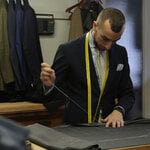I remember in Warren Bodie's book on the P-38, it was said that the P-38's wings would have been as thin as the Spitfire had ferry range, and auxiliary fuel not been a problem: I'm not sure if that was an honest statement or a 20/20 hindsight view, but a P-38 with slimmer wings would have been quite a design, and might have avoided a lot of the problems the actual P-38 would have faced.
There'd have been range penalties, provided they didn't use an overall different planform, but it would have been a hell of a performer, in overall
There'd have been range penalties, provided they didn't use an overall different planform, but it would have been a hell of a performer, in overall




